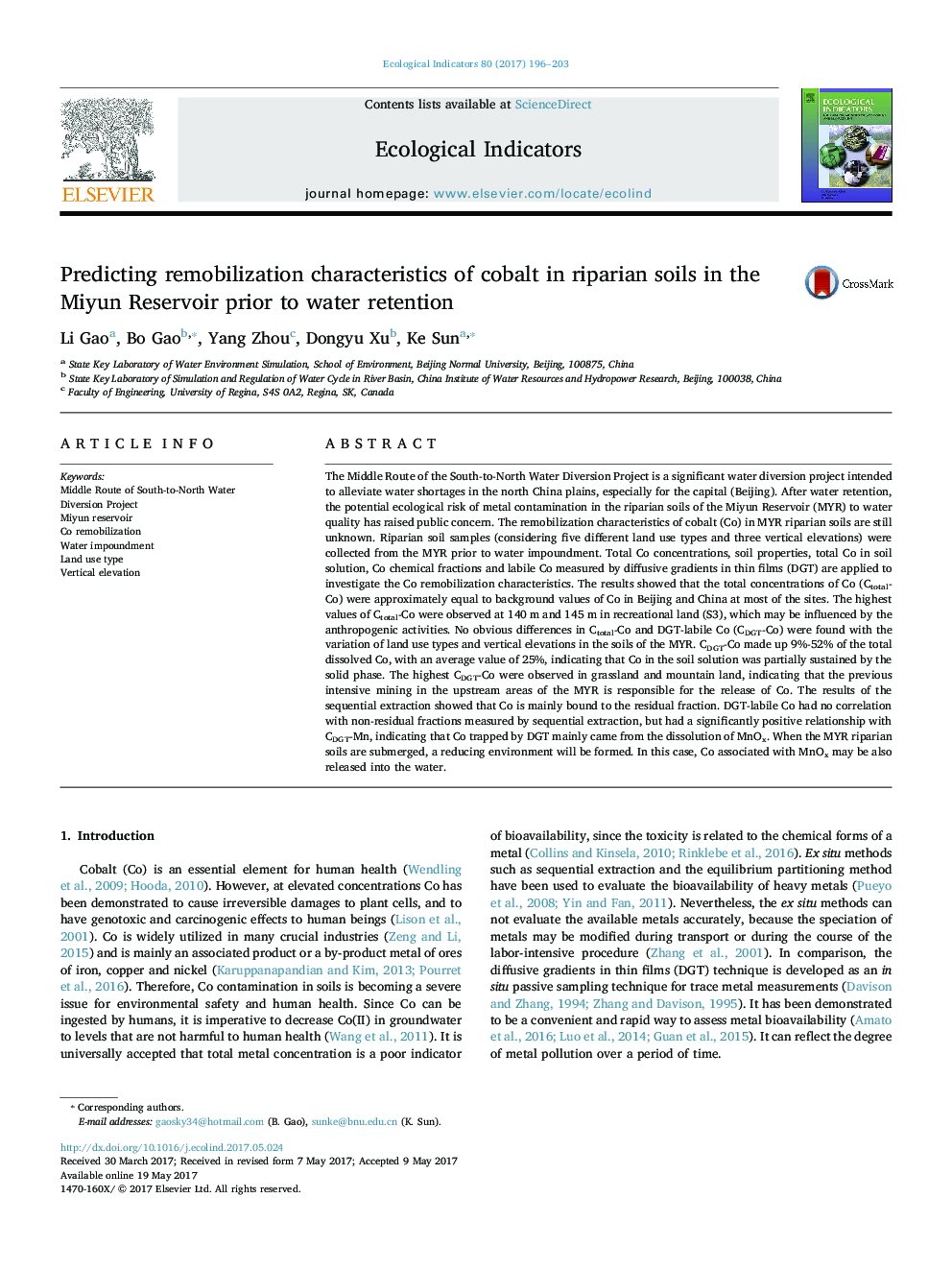| Article ID | Journal | Published Year | Pages | File Type |
|---|---|---|---|---|
| 5741381 | Ecological Indicators | 2017 | 8 Pages |
â¢The release risk of Co in riparian soils will increase after the water impoundment.â¢Anthropogenic activities have an influence on the mobility of Co.â¢CDGT-Co had no significant difference among the land use type and vertical elevation.â¢Mn oxide dissolution may be the source of Co remobilization.â¢CDGT-Co had no correlations with non-residual fractions by BCR extraction.
The Middle Route of the South-to-North Water Diversion Project is a significant water diversion project intended to alleviate water shortages in the north China plains, especially for the capital (Beijing). After water retention, the potential ecological risk of metal contamination in the riparian soils of the Miyun Reservoir (MYR) to water quality has raised public concern. The remobilization characteristics of cobalt (Co) in MYR riparian soils are still unknown. Riparian soil samples (considering five different land use types and three vertical elevations) were collected from the MYR prior to water impoundment. Total Co concentrations, soil properties, total Co in soil solution, Co chemical fractions and labile Co measured by diffusive gradients in thin films (DGT) are applied to investigate the Co remobilization characteristics. The results showed that the total concentrations of Co (Ctotal-Co) were approximately equal to background values of Co in Beijing and China at most of the sites. The highest values of Ctotal-Co were observed at 140Â m and 145Â m in recreational land (S3), which may be influenced by the anthropogenic activities. No obvious differences in Ctotal-Co and DGT-labile Co (CDGT-Co) were found with the variation of land use types and vertical elevations in the soils of the MYR. CDGT-Co made up 9%-52% of the total dissolved Co, with an average value of 25%, indicating that Co in the soil solution was partially sustained by the solid phase. The highest CDGT-Co were observed in grassland and mountain land, indicating that the previous intensive mining in the upstream areas of the MYR is responsible for the release of Co. The results of the sequential extraction showed that Co is mainly bound to the residual fraction. DGT-labile Co had no correlation with non-residual fractions measured by sequential extraction, but had a significantly positive relationship with CDGT-Mn, indicating that Co trapped by DGT mainly came from the dissolution of MnOx. When the MYR riparian soils are submerged, a reducing environment will be formed. In this case, Co associated with MnOx may be also released into the water.
Graphical abstractDownload high-res image (196KB)Download full-size image
